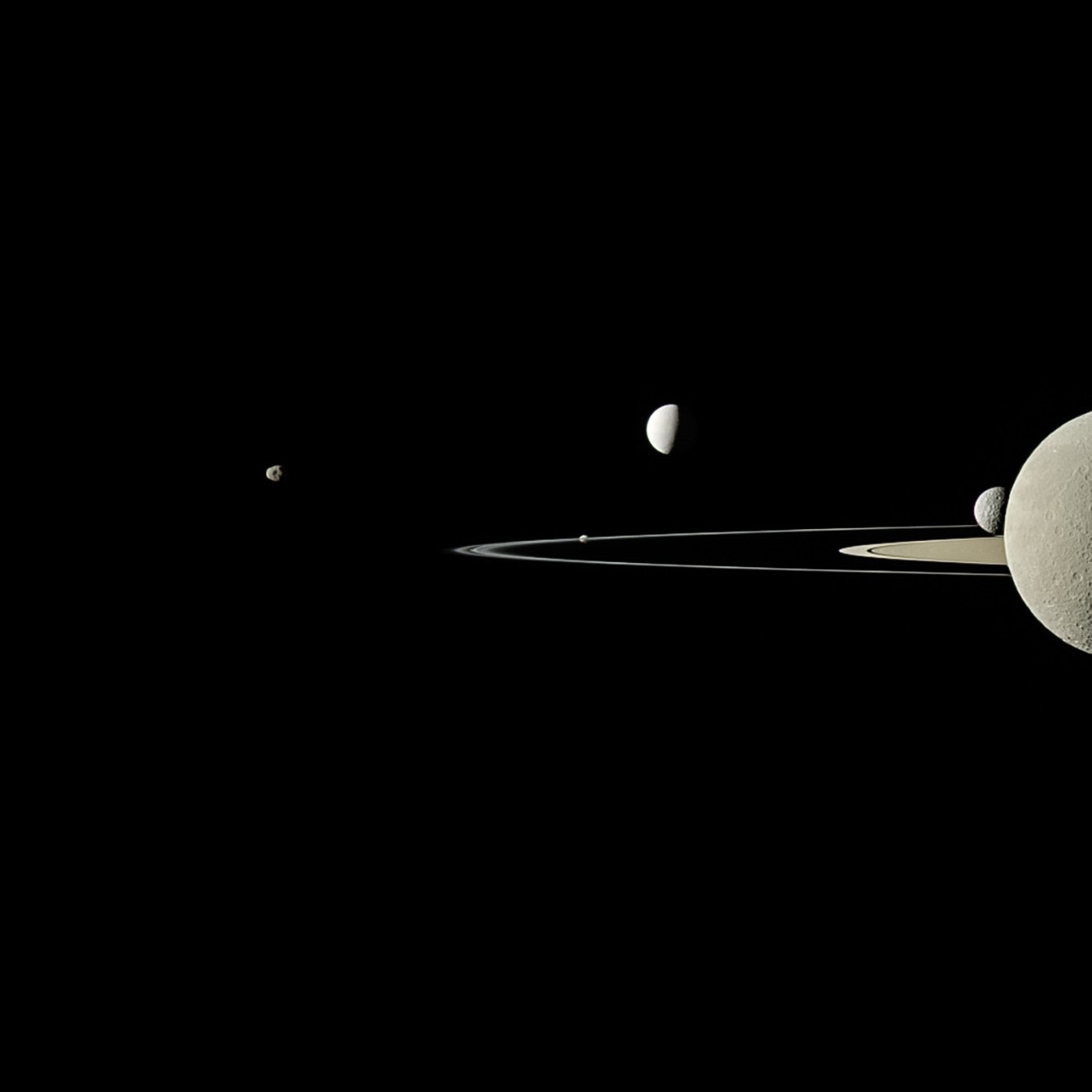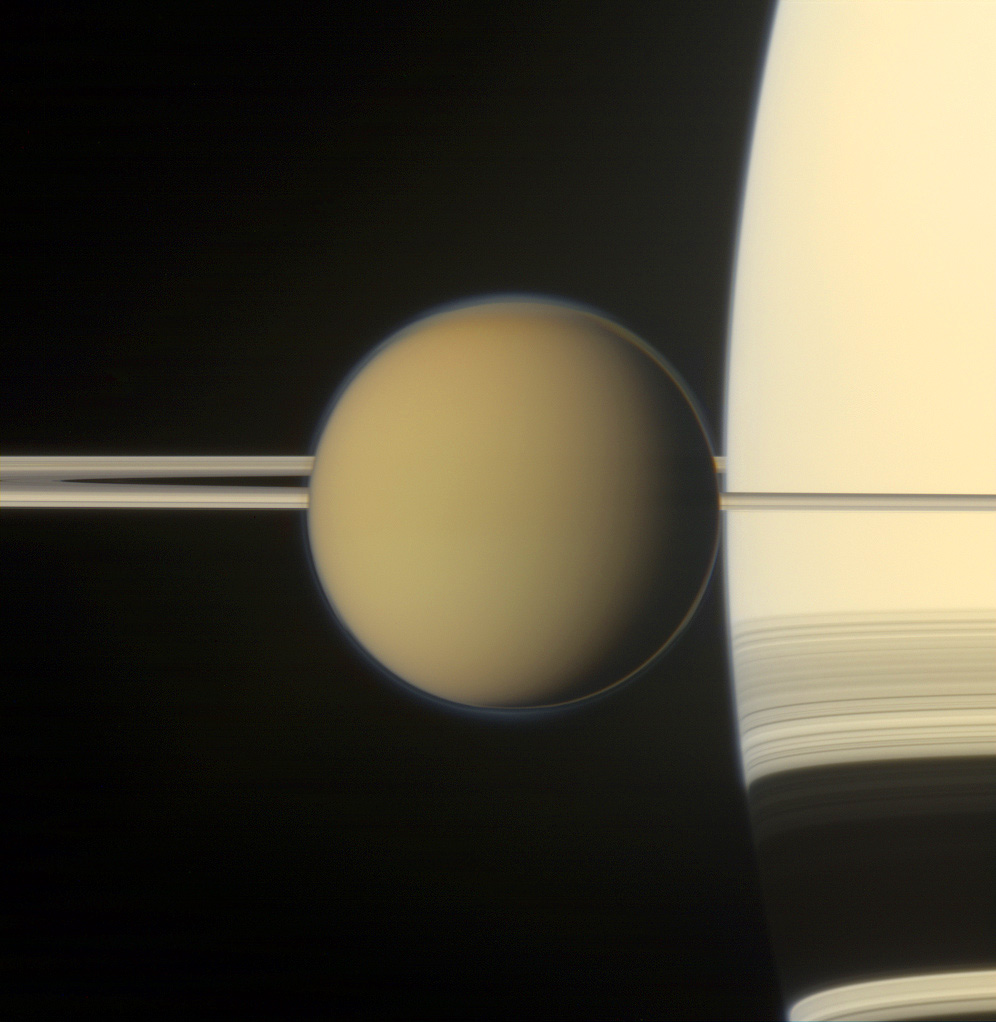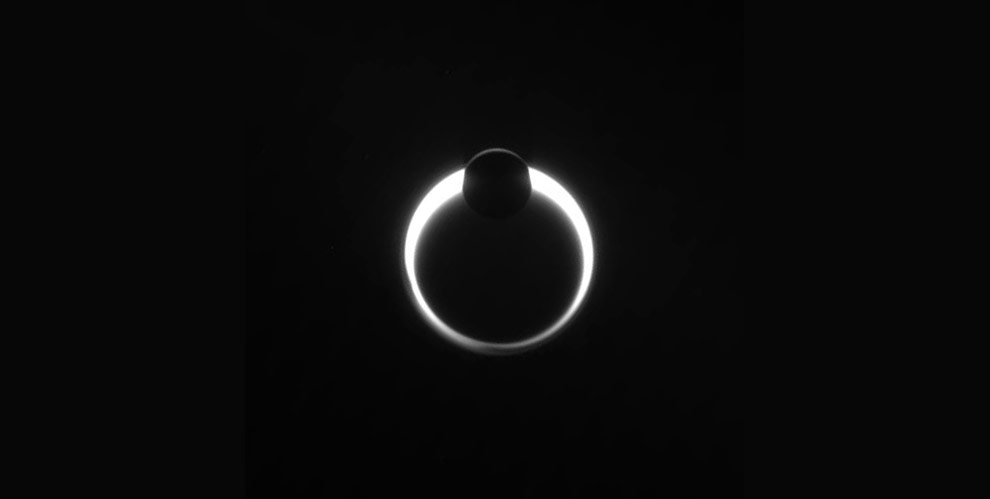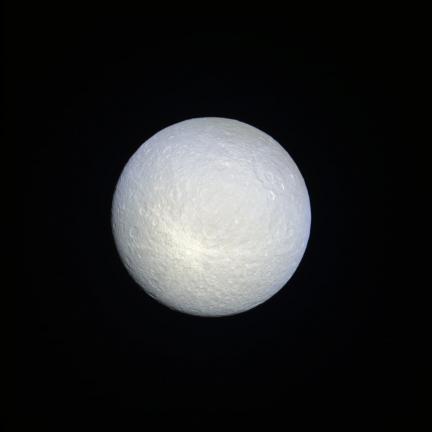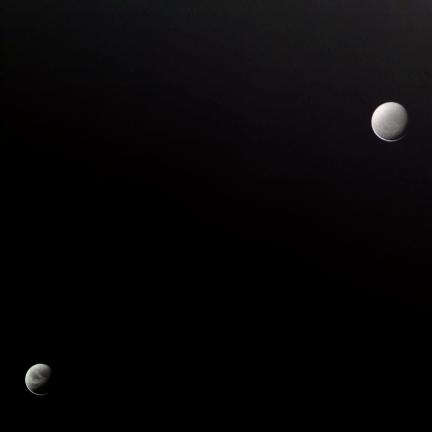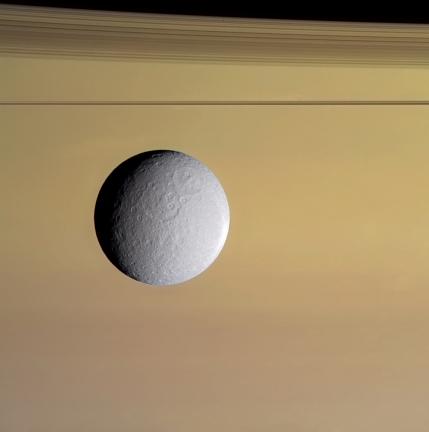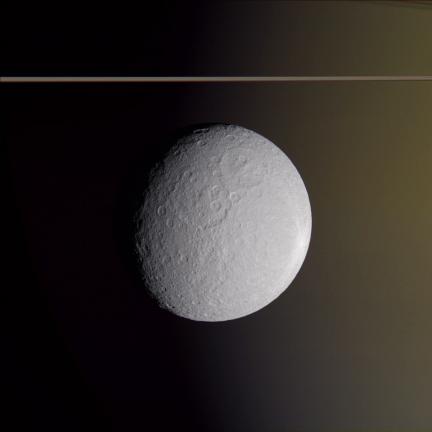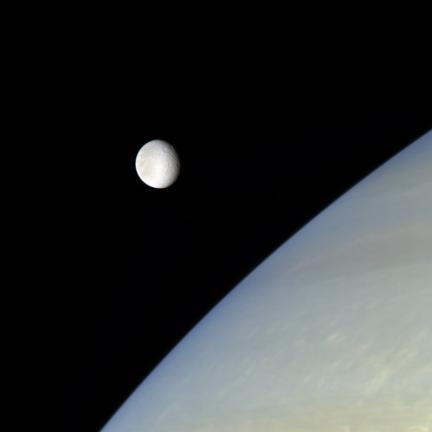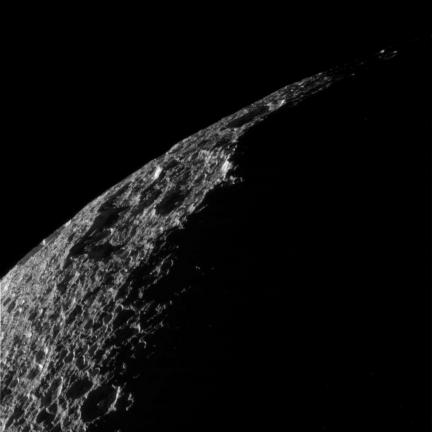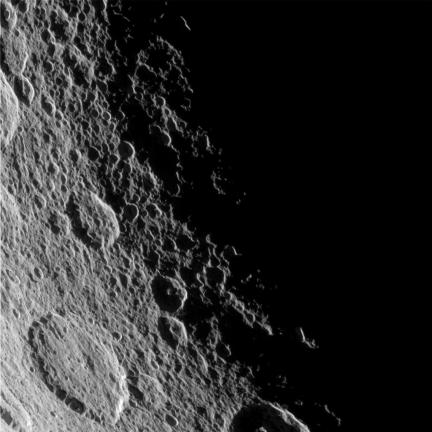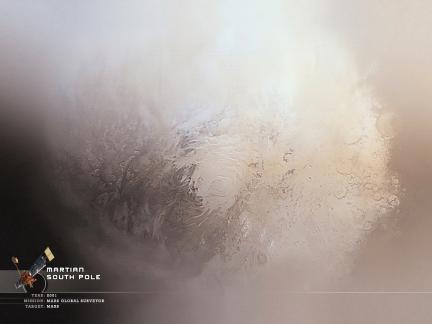From planetary.org: On July 29, 2011, Cassini captured five of Saturn’s moons in a single frame with its narrow-angle camera: Janus, Pandora, Enceladus, Rhea, and Mimas. NASA/JPL-Caltech/Space Science Institute. This is a full-color look at a view that was originally published in September 2011.
Titan and Rhea Together Again
 The last time we saw this reunion was here.
The last time we saw this reunion was here.
Around Saturn
Around Saturn from fabio di donato on Vimeo.
In Saturn’s Rings Official Trailer
The long awaited official trailer for “In Saturn’s Rings” has been unleashed. Looking forward to this film for over three years now.
Best of G. Ugarkovic (Last 8 Months)
If you follow this blog on any basis, you might be well aware that a good percentage of the imagery is provided by our good flickr friend Gordan Ugarkovic. Here is a bit of what we missed from him in the last 10 months we were locked out.
Titan at the edge of Saturn taken 2011-05-21. Looks unreal. Like Titan was dropped into the scene using Photoshop. A sin I would never commit. See the lesser “official” NASA version released a few months back here.
Keeping with the theme of moons transiting Saturn. Here is Rhea and tiny Epimetheus doing what they do. Taken in 2010-03-24.
Finally, just to change it up… two moons against Titan, another of Saturn’s moons. Pictured above the Titanian cloud-tops is Dione on the left and Rhea on the right.
Saturn’s Five
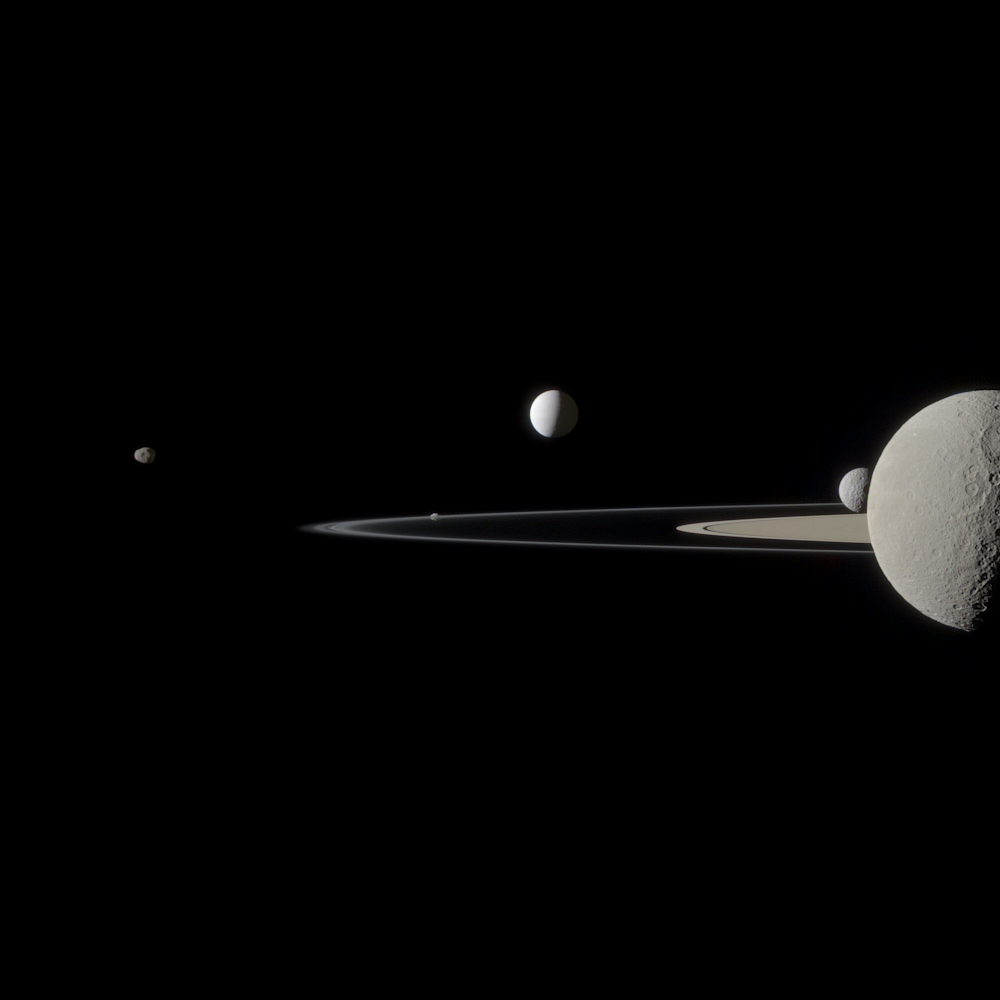 Space enthusiasts seem to really like shots that have more than one body in the same frame. How about five… or six (if you count the rings of Saturn)? Starting left to right that is Janus, Pandora, Enceladus, Mimas and Rhea.
Space enthusiasts seem to really like shots that have more than one body in the same frame. How about five… or six (if you count the rings of Saturn)? Starting left to right that is Janus, Pandora, Enceladus, Mimas and Rhea.
Thanks again to Gordan Ugarkovic.
50 Years of Space Exploration Map
 This is so nice, but I am furious that I didn’t get to design this. This is Information design at it’s best naturally by National Geographic. You can see 50 years of robotic planetary exploration at a glance. It even includes failed missions represented by darker desaturated lines. As far as I can tell the cream colored lines are US and the red ones are Soviet. Interesting to see how many of those lines go dark around Mars.
This is so nice, but I am furious that I didn’t get to design this. This is Information design at it’s best naturally by National Geographic. You can see 50 years of robotic planetary exploration at a glance. It even includes failed missions represented by darker desaturated lines. As far as I can tell the cream colored lines are US and the red ones are Soviet. Interesting to see how many of those lines go dark around Mars.
Now where does one purchase such a thing? Perhaps this month’s issue of NG? Here is the link to it on their site complete with zoom viewer and them some kind samaritan posted a hires version to flickr.
Partial Eclipse of Titan
Rhea Flyby Animation
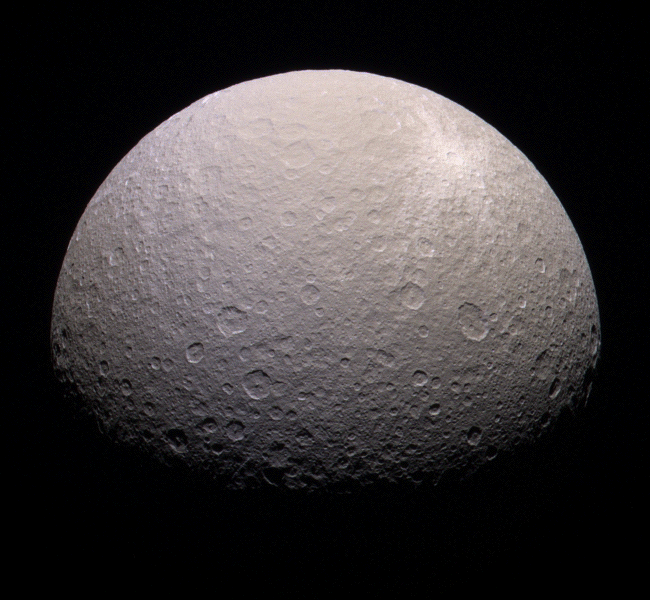 Another Gordan Ugarkovic. It never ends!
Another Gordan Ugarkovic. It never ends!
Rhea in Great Detail
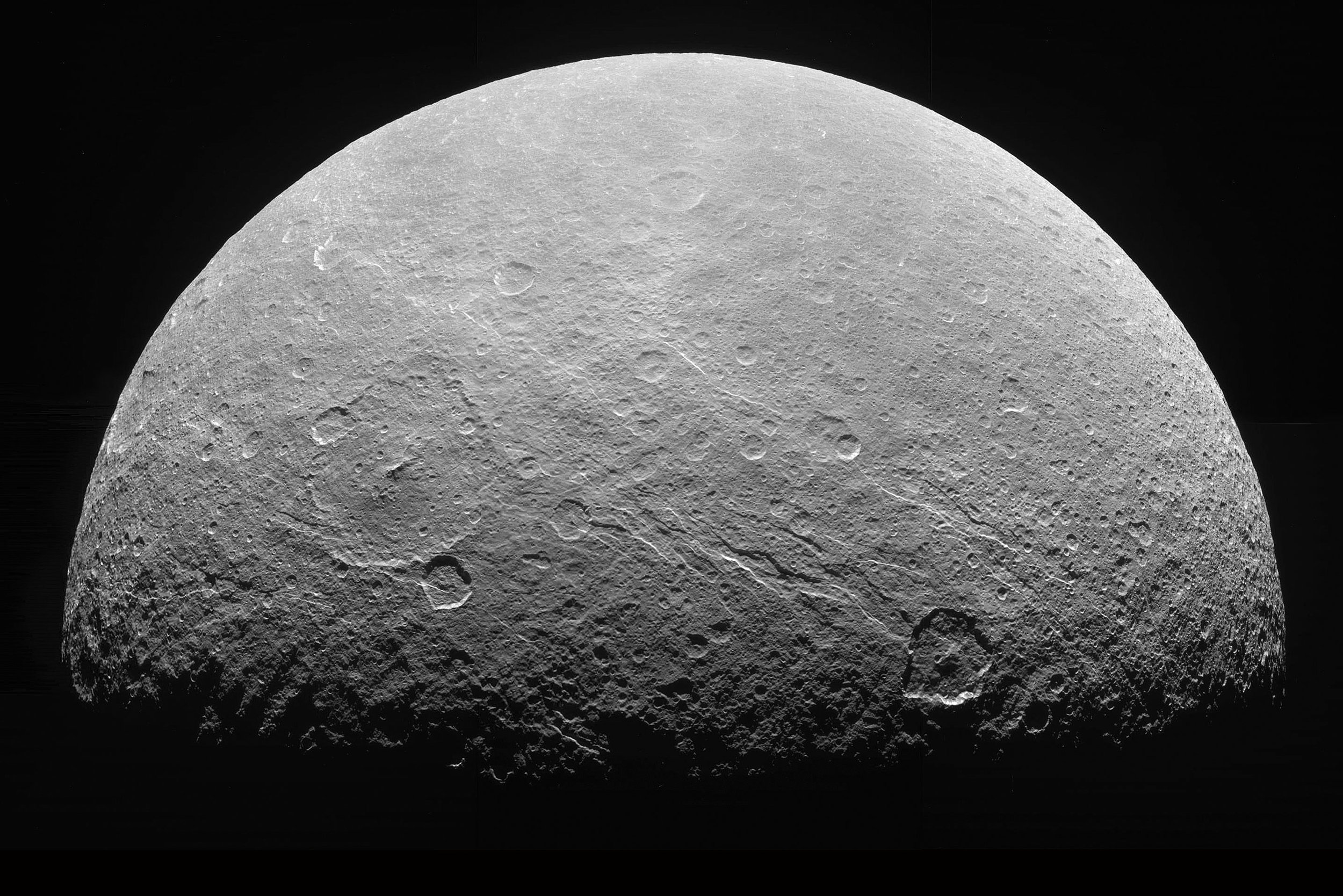 Closest view of Rhea (moon of Saturn) at full resolution, taken at about 98,000-100,000km on February 2009. Mosaic by Exploitcorporations at unmannedspaceflight.com.
Closest view of Rhea (moon of Saturn) at full resolution, taken at about 98,000-100,000km on February 2009. Mosaic by Exploitcorporations at unmannedspaceflight.com.
Rhea Under Rings
Rings at Rhea?
Some scientists believe that they have stumbled upon the first ever detected rings around a moon. As if that were not interesting enough — these theoretical rings would also be the only rings ever found around a body that is not a gas giant such as Saturn, Jupiter, Uranus or Neptune. As a matter of fact, Rhea isn’t even one of the larger moons of the Solar System. If these rings exist they are sparse and made of small particles, so Cassini is unlikely to ever detect these particles with the cameras its is equipped with. Therefore, there are no actual images to support this theory… but it is interesting enough that I feel compelled to at least point interested space fans to a great article explaining the theory on the Planetary Society’s blog.
Full Disk Rhea
Rhea and Dione, So Happy Together
Cassini Team Shows Some Color
NASA released an unusually large amount of color images to the Cassini website recently. Most of what is shown here on this site are actually images put together by freelance imagers who access the raw files and do some stitching together of filtered images. Color images coming straight off the Cassini website are a rare event, so when about 8 appeared in the gallery a few days ago… it was an unexpected gift.
 Saturn as seen from the unlit side of the rings.
Saturn as seen from the unlit side of the rings.
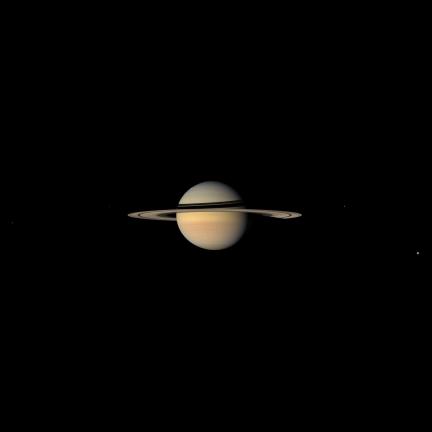 A family portrait of the Saturn System. Moons visible in this image (you need to click the preview) are Dione at far left, Enceladus near the left side ring edge, Mimas a speck on ring shadows on the western limb, Rhea against the northern hemisphere, Tethys near the right ring edge, and Titan near lower right.
A family portrait of the Saturn System. Moons visible in this image (you need to click the preview) are Dione at far left, Enceladus near the left side ring edge, Mimas a speck on ring shadows on the western limb, Rhea against the northern hemisphere, Tethys near the right ring edge, and Titan near lower right.
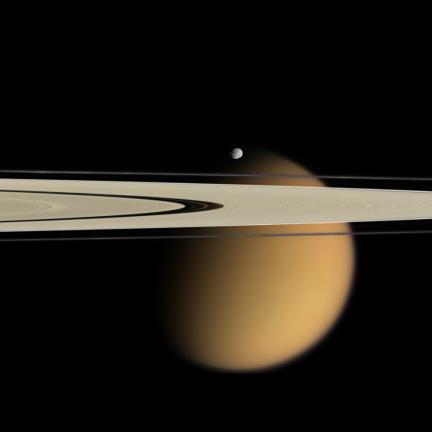 Titan and a small moonlet named Epimetheus share the frame with Saturn’s rings.
Titan and a small moonlet named Epimetheus share the frame with Saturn’s rings.
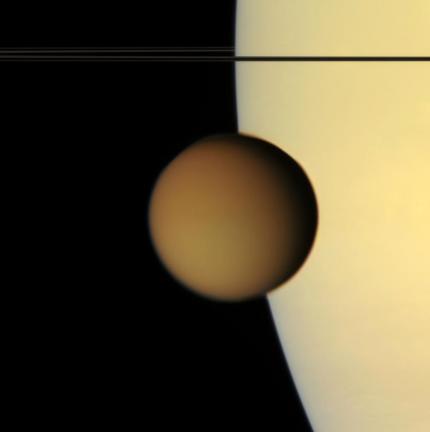 A rare color view of both Saturn and Titan in one frame. This is the only one of its kind thus far in the mission.
A rare color view of both Saturn and Titan in one frame. This is the only one of its kind thus far in the mission.
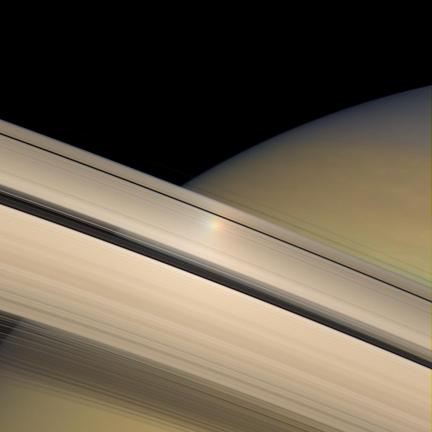 A small rainbow appears as sunlight streams through Saturn’s rings.
A small rainbow appears as sunlight streams through Saturn’s rings.
Rhea Transits Saturn
These images were taken of Rhea as it (and Cassini) sped across Saturn’s globe on August 30, 2007. The near-natural color images were composed from raw near-infrared, green and ultraviolet filtered files made available on the NASA-Cassini website. Some of the details may have been enhanced through the use of infrared and ultraviolet in place of red and blue… but they have been adjusted to reflect what we assume is closer to actual natural color.
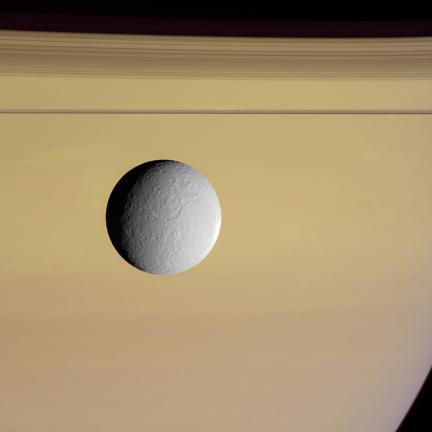 From approximately 93,823 km.
From approximately 93,823 km.
Rhea Floats Above Saturn
Another “Color” View of Rhea
 Just as with the previous color image of Rhea, the same process was used to create this view of Rhea against Saturn.
Just as with the previous color image of Rhea, the same process was used to create this view of Rhea against Saturn.
This image was added to a set of images posted later as it was taken as part of the same approach as the others.
Rhea From about 50,000 km
Cassini actually passed within 5,000 km of Rhea (a moon of Saturn) on the 30th and took a multitude of images. All the closest images are quite bright and it is unclear if the moon is just that bright, if there was an anomaly in the process or if some basic calibration has yet to occur. At any rate here are more distant images from the flyby and what happens if you register the various filtered images into one RGB (red, green, blue) file in Photoshop. The IR1 (infrered) is placed in the red channel, the GRN is placed in the green channel and the VIO (ultraviolet) is placed in the blue and you get what is truly false color, but not very far from what other natural color images have shown in the past.
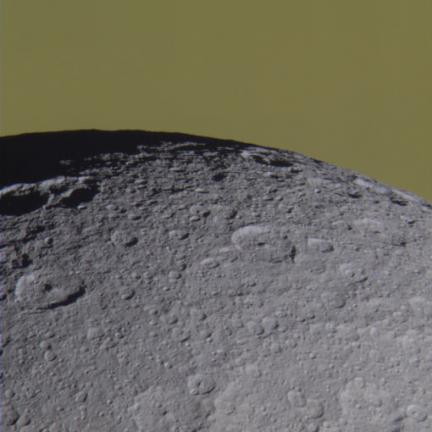
Saturn (the solid color behind Rhea) seems a bit more green than expected… however, if the moon was starting to pass onto the side of the planet in darkness, it does tend to move toward green hues when in shadow.
Here is another one the further away images at 58,731 km in clear filter (B&W). You can see into one of the craters along the edge at the lower left side and peer across at the opposite side wall. It is similar to the close flyby images obtained of Dione and its deep canyon walls from last year.
And another clear filter from 61,602 km:
Wallpapers: 1024x768 Set 05
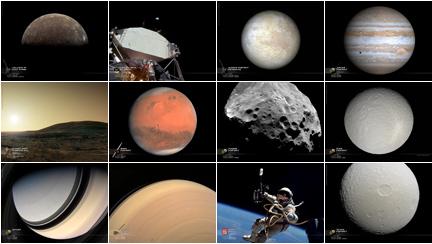 Managed to make the more common wallpaper size 1024x768 for the 14 most recent wallpaper posts (started with set 05 images, 1-4 to come). Download zip file here. Some were not produced as they just didn’t translate so easily into the format. However, the opposite is true in some cases such as for this image of the Martian south pole. Its resolution was hopelessly low for the larger landscape format, so now with the smaller size it was possible (just barely) to get it posted as a wallpaper.
Managed to make the more common wallpaper size 1024x768 for the 14 most recent wallpaper posts (started with set 05 images, 1-4 to come). Download zip file here. Some were not produced as they just didn’t translate so easily into the format. However, the opposite is true in some cases such as for this image of the Martian south pole. Its resolution was hopelessly low for the larger landscape format, so now with the smaller size it was possible (just barely) to get it posted as a wallpaper.
Included in the set for download are the images pictured at the top and for the sake of google search, here they are listed out:
- 1024x768 Wallpaper of CALLISTO at half view, moon of JUPITER
- 1024x768 Wallpaper of EARTH from APOLLO landing site
- 1024x768 Wallpaper portrait of EUROPA, moon of JUPITER
- 1024x768 Wallpaper portrait of JUPITER
- 1024x768 Wallpaper of MARS region of DEUTERONILUS (not shown)
- 1024x768 Wallpaper of MARS surface at HUSBAND HILL
- 1024x768 Wallpaper portrait of MARS
- 1024x768 Wallpaper portrait of PHOEBE, moon of SATURN
- 1024x768 Wallpaper portrait of RHEA, moon of SATURN
- 1024x768 Wallpaper of SATURN, crescent view (not shown)
- 1024x768 Wallpaper of SATURN from above the NORTHERN POLE
- 1024x768 Wallpaper of SATURN globe
- 1024x768 Wallpaper of SPACE WALK
- 1024x768 Wallpaper portrait of TETHYS, moon of SATURN
